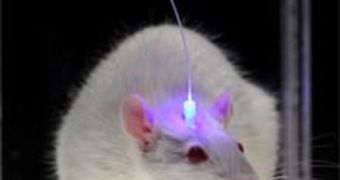Over the past couple of years, a new technology known as optogenetics has swept the fields of medical and anatomical research, thanks to the amazing advancements it can bring forward in our understanding of the human brain. Recently, at the Society for Neuroscience conference, in Chicago, experts from the University College London presented a new line of study, in which the neurons involved in memory formation could be analyzed individually, using molecular “light switches.” These structures can be controlled by light, which is the basis for optogenetics, Technology Review reports.
The new type of investigations could bring forth a large amount of new knowledge, as it could allow researchers to peer at what regions of the brain are involved in memory formation, in the process of addiction, or even in the transition state between sleep and wakefulness. These are some of the most important questions in neuroscience today, and most of them are unanswered, or poorly answered.
Optogenetics was only invented about four years ago by researchers Ed Boyden, now a bioengineer at the Massachusetts Institute of Technology (MIT), and Karl Deisseroth, Stanford University physician and bioengineer. Despite its young age, it's already being used in research labs around the globe, precisely because it may hold the key to unlocking some of the greatest mysteries of the human mind. The method allows for the direct observation of the effects that neural stimulation has on the behaviors of live animals, as advancements in technology have made it possible to implant fiber-optic devices deep within the brain, from where they can shine light wherever scientists want them to.
Neurons are not usually sensitive to light, so experts need to genetically modify them by breeding them to carry a green algae-derived protein. When exposed to light, this protein triggers electrical activity within the nerve cell, and the impulse is then transmitted to other neurons in the neural path. This essentially means that the behavior of certain brain areas can be influenced “live,” as scientists take note of the changes mouse models go through.
UCL expert Michael Hausser and his team determined that as little as 100 to 200 neurons in the brains of mice were required in order to form a memory of a Pavlovian reflex. The experts associated an electrical shock with a sound, thus teaching the mice to fear the sound. When they shone light on the neuron subset, they incited the same fear response in the rodents, which froze on account of the light, and not the sound. The new results could be used in the future in therapies against a large number of brain disorders, including Parkinson's disease.

 14 DAY TRIAL //
14 DAY TRIAL //